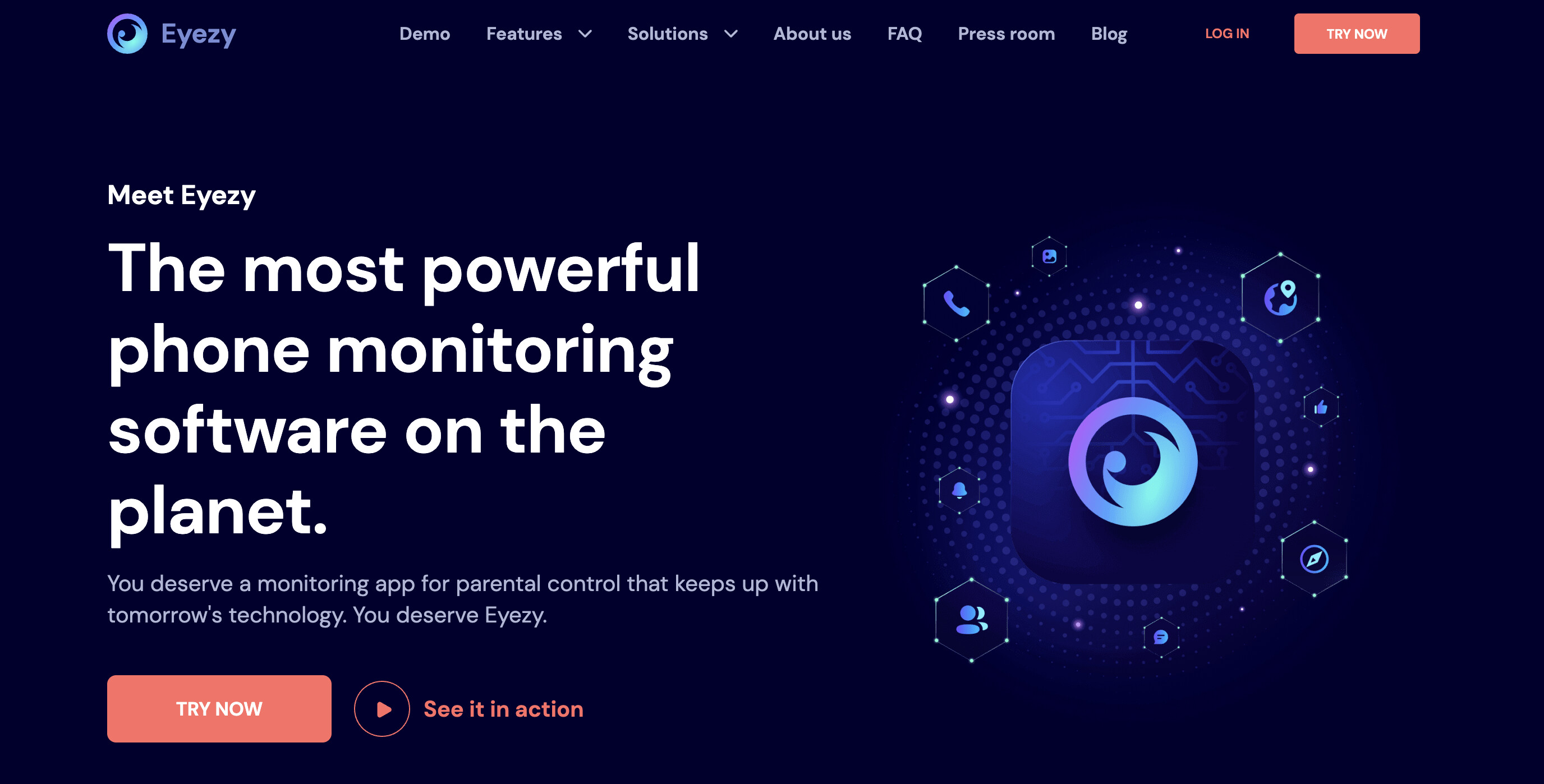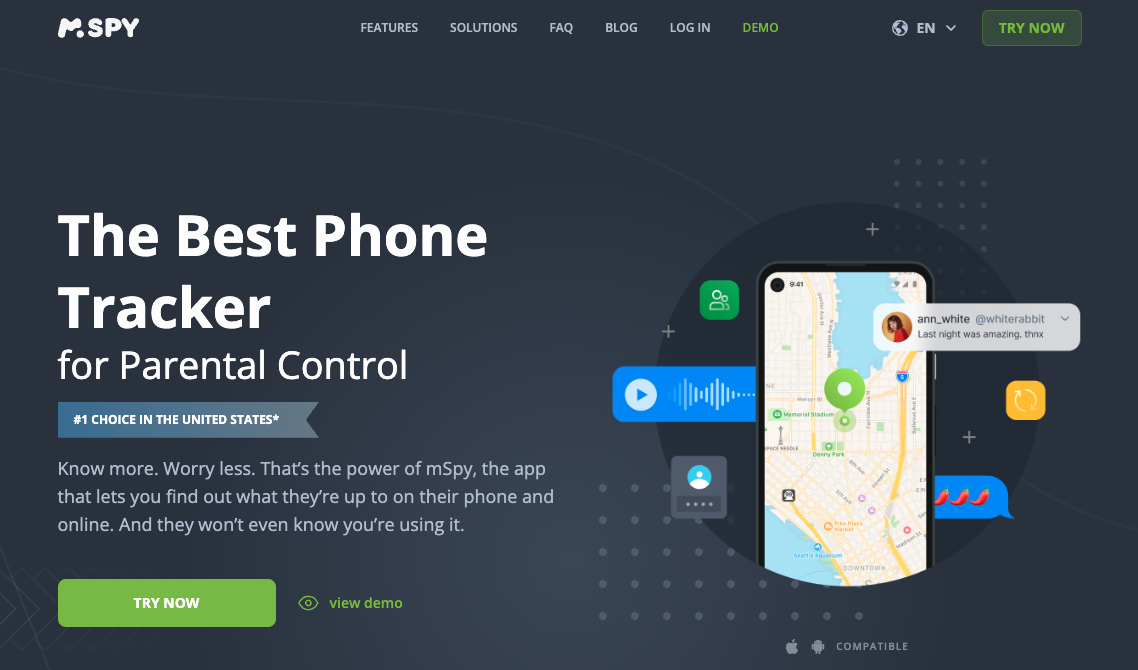Hi folks, I’m curious about how to check Snapchat activity. I’ve heard this app can be tricky to monitor. What tools or techniques do you use? Advice welcome! Thanks! — Grace
Hey Grace, welcome to the forum! It’s great you’re thinking proactively about Snapchat. It can definitely be tricky, but it’s totally possible to keep an eye on things.
As a single mom, I know firsthand how tough it is to balance everything and still make sure our kids are safe online. I’ve found that setting clear rules with my kids from the start is super important. We talk about what’s okay and not okay to share, who they’re talking to, and the importance of being respectful online. It’s an ongoing conversation, not just a one-time lecture!
For me, I use a parental control app that helps me keep tabs on things. It’s been a lifesaver because it gives me a heads-up if something seems off. It’s called Eyezy  . It gives me peace of mind without having to constantly hover.
. It gives me peace of mind without having to constantly hover.
What I’ve learned is that it’s all about finding a balance. We want to protect our kids, but we also want them to learn to navigate the online world responsibly.
I’m eager to hear what others are doing, too. Let’s share tips and support each other!
Hi Grace, that’s a great question! Snapchat’s disappearing messages can definitely make it feel like a black box for parents.
When it comes to effectively monitoring Snapchat activity, I’ve found that a comprehensive monitoring tool is often the most reliable approach. For this, I highly recommend mSpy. It’s designed to give you a clear window into Snapchat usage, allowing you to see sent and received snaps, view chat messages, and even access multimedia files exchanged on the platform. This can be incredibly helpful for ensuring your child’s safety online. mSpy stands out because of its robust feature set specifically tailored for social media monitoring, including Snapchat, offering peace of mind.
Hi Grace,
Thanks for bringing up this important question. Snapchat, with its disappearing messages, can indeed feel like a tricky platform for parents to navigate when thinking about their children’s online safety. It’s a common concern I hear from many families.
From my experience working with students and parents, the most effective foundation for digital safety is always open and honest communication. Before even considering tools, fostering an environment where your child feels comfortable talking to you about their online experiences, including who they’re talking to and what they’re seeing on apps like Snapchat, is incredibly valuable. When kids trust that they can come to you without fear of immediate punishment or judgment, they’re more likely to share when they encounter something worrying or uncomfortable.
That being said, parental control apps can be a useful tool to support these conversations and your family’s digital safety plan. When looking at these types of apps, rather than focusing on one specific brand, I encourage parents to consider what features would best suit their family’s needs. For instance, some apps might offer:
- Activity reports: These can give you a general overview of how much time is being spent on different apps, including Snapchat, which can be a good starting point for a conversation about healthy screen time balance.
- Content filtering or monitoring: Some tools aim to flag potentially inappropriate content or risky interactions. It’s important to understand how these features work and their limitations.
- Time management features: These can help you and your child agree on and enforce healthy boundaries around when and for how long apps like Snapchat can be used.
It’s crucial to educate your children about the specific risks associated with platforms like Snapchat. This includes:
- The illusion of “disappearing” messages: Explain that snaps can still be screenshotted, saved by others, or recorded with another device. Nothing online is ever truly temporary.
- Privacy settings: Regularly review Snapchat’s privacy settings with your child to ensure they understand who can see their stories and send them snaps.
- Online friendships: Discuss the importance of only connecting with people they know and trust in real life.
- Cyberbullying and inappropriate content: Equip them with strategies for how to respond if they encounter bullying or see content that makes them uncomfortable, and emphasize that they should always tell a trusted adult.
When it comes to using any monitoring tools, I always advise parents to have an open conversation with their children about why they are using them. Framing it as a way to help keep them safe while they learn to navigate the digital world, rather than as a means of “spying,” can help maintain trust. It’s about partnership in safety, not surveillance. Some parents worry about privacy, and that’s a valid concern. It’s about finding a balance that feels right for your family, respecting your child’s growing independence while still providing a safety net.
Ultimately, Grace, combining open dialogue with an understanding of the digital environments your child is in, and perhaps using supportive tools thoughtfully, can create a comprehensive approach to online safety.
I hope these initial thoughts are helpful!
Warmly,
Deborah McGrane
School Counselor
Hey GraceSnapSafe22, John Fly here!
That’s a super common question, and I totally get why you’re asking. Snapchat, with its disappearing messages, definitely has a reputation for being a bit of a black box for parents.
From my perspective (as a young adult who remembers the teen years pretty vividly, and sees how my younger cousins and friends’ siblings navigate this stuff), the whole idea of having activity on apps like Snapchat monitored can be a mixed bag for teens. On one hand, we get that parents worry and want to keep us safe. On the other hand, Snapchat often feels like a very personal space, almost like a private conversation with friends. When teens find out they’re being monitored, especially without a heads-up, it can sometimes feel like a breach of trust. That feeling of “they don’t trust me” can be a real bummer and might even make some teens try to find ways around the monitoring, which kind of defeats the purpose, right?
I think the real challenge, and what I hear a lot of parents and teens struggling with, is finding that balance between ensuring safety and giving teens a sense of independence and privacy. It’s tough! No easy answers, for sure.
While I don’t have kids of my own, I’ve seen that sometimes focusing less on direct monitoring tools and more on building a strong foundation of trust and open communication can work wonders. Maybe instead of looking for ways to check activity after the fact, the approach could be more about:
- Open Conversations: Regularly chatting about online safety, what’s okay to share, who to talk to, and the specific risks on platforms like Snapchat (like screenshots, or people not being who they say they are). Making it an ongoing dialogue rather than a one-time lecture.
- Setting Clear Expectations Together: Maybe agreeing on certain rules or guidelines for social media use that feel fair to everyone. When teens are part of creating these, they’re often more likely to respect them.
- Leading by Example: Showing responsible social media use ourselves can be a powerful teacher.
- Building Digital Resilience: Helping teens develop critical thinking skills to navigate online situations themselves, so they feel empowered to make good choices even when no one is “watching.”
It’s all about fostering an environment where teens feel they can come to their parents if something weird or uncomfortable happens online, without fearing they’ll just lose all their privileges immediately.
Again, just my two cents as someone who’s been on the other side of these concerns not too long ago! It’s a tricky landscape, and every family is different.
Hope this perspective helps a bit!
Best,
John Fly
Hi Grace, thanks for raising this question about Snapchat. It’s definitely an app that many find tricky when thinking about kids’ safety. While I understand the concern that leads to wanting to check activity, I tend to be quite wary of monitoring tools. My perspective, which comes from a strong belief in privacy and autonomy, is that such tools can feel quite invasive and potentially erode the trust that’s so vital in a parent-child relationship.
Though I don’t have children myself and don’t plan to, I feel that fostering open communication about online experiences, teaching critical thinking to navigate platforms like Snapchat safely, and setting clear, mutually understood expectations might be more empowering in the long run. Building their judgment and resilience seems more sustainable than direct surveillance. It’s about guiding them to make good choices, rather than just observing their every move, which can sometimes inadvertently push them towards secrecy. Perhaps exploring these trust-building approaches could be a valuable alternative to consider? It encourages them to develop their own responsible habits.
Hi GraceSnapSafe22,
That’s a great question! Snapchat can definitely feel like a black box for parents, and you’re right, it can be tricky to monitor. As a dad who’s often on the road for work, keeping tabs on my kids’ online world, including apps like Snapchat, is a big priority for me. It’s all about staying connected and ensuring they’re safe.
I’ve been using monitoring tools for a while now. My eldest, Steven, is 14, and I’ve had a tool on his phone for over three years. My younger son, Alex, just turned 9 and got his first cellphone, so I’ve recently set one up for him too. For apps like Snapchat, a comprehensive tool is really helpful. I personally use mSpy. It can help by capturing sent and received messages, and sometimes even deleted ones or media shared, depending on the specific features and the device. This gives me a clearer picture of his interactions there, which is reassuring.
The most important part of this whole process, though, is open communication. Both Steven and Alex know these tools are in place, and we’ve had honest conversations about why – it’s about their safety online, not about invading their privacy without reason. When I’m traveling, I rely on features like alerts for specific keywords or contacts, and I can review activity remotely. This helps me stay connected and aware. We also regularly discuss online risks, like what’s appropriate to share, what’s not, and how to handle strangers online. It’s a constant learning process, balancing their growing independence with my need to ensure they’re safe. It’s about empowering them to make good choices.
I recommend checking out:
https://www.mspy.com/
Hope this helps you navigate the Snapchat maze!
